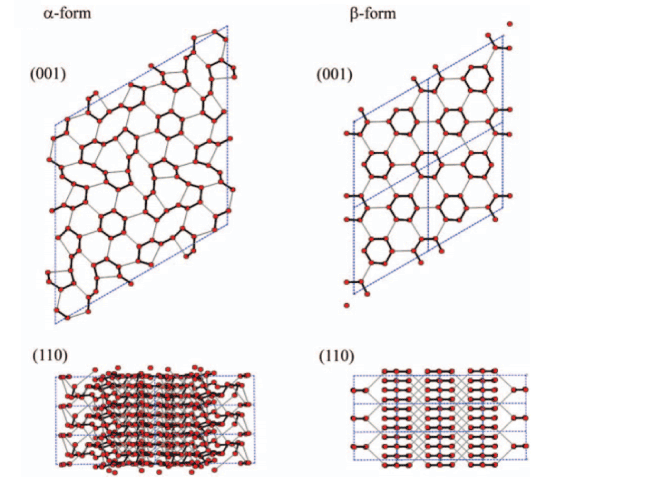“High pressure investigation of a-form and CH4-loaded b-form of hydroquinone compounds”
- Authors
Y. Lee*, J.-W. Lee, H.-H. Lee, D.R. Lee, C.-C. Kao, T. Kawamura, Y. Yamamoto, J.-H. Yoon
- Journal
Journal of Chemical Physics
Vol.130, pp.124511, 2009.03 - DOI
Abstract
The high pressure compression behaviors of two hydroquinone compounds have been investigated using a combination of in situ synchrotron x-ray powder diffraction and Raman spectroscopy up to ca. 7 GPa. The structural integrity of the α-form hydroquinone clathrate is maintained throughout the pressure range, whereas the CH4-loaded β-form hydroquinone clathrate decomposes and transforms to a new high pressure phase near 5 GPa. The bulk modulus (K) and its pressure derivative (K′) of the α-form and the CH4-loaded β-form hydroquinones are measured to be 8.2(3) GPa and 8.4(4), and 10(1) GPa and 9(2), respectively, representing one of the most compressible classes of crystalline solids reported in the literature. The corresponding axial compression behaviors, however, show greater contrast between the two hydroquinone compounds; the elastic anisotropy of the α-form is only marginal, being K(a):K(c) = 1.08:1, whereas that of the CH4-loaded β-form is rather drastic, being K(a):K(c) = 11.8:1. This is attributed to the different dimensionality of the hydrogen bonding networks between the two structures and might in turn explain the observed structural instability of the β-form, compared to the α-form.












